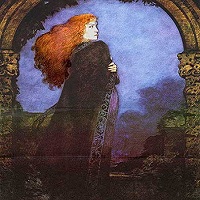
Morgan Le Fay
CBUB Wins: 2
CBUB Losses: 0
CBUB Ties: 0
Win Percentage: 100.00%
Added by: Buzz Line
Read more about Morgan Le Fay at: Wikipedia
Official Site: Public Domain
Morgan le Fay , alternatively known as Morgane, Morgaine, Morgana and other variants, is a powerful sorceress in the Arthurian legend. Early works featuring Morgan do not elaborate her character beyond her role as a fay or magician. She became much more prominent in the later cyclical prose works such as the Lancelot-Grail and the Post-Vulgate Cycle, in which she becomes an antagonist to King Arthur and Queen Guinevere. She is said to be the daughter of Arthur's mother, the Lady Igraine, and her first husband, Gorlois, Duke of Cornwall, so that Arthur (son of Igraine and Uther Pendragon) is her half brother.
The early accounts of Geoffrey of Monmouth and Gerald of Wales refer to Morgan in conjunction with the Isle of Apples (later Avalon) to which the fatally-wounded Arthur was carried. To the former she was an enchantress, one of nine sisters, while to the latter she was the ruler and patroness of an area near Glastonbury and a close blood-relation of King Arthur. In the early romances of Chrétien de Troyes, also, she figures as a healer.
Though in later stories she becomes an adversary of the Round Table when Guinevere discovers her adultery with one of her husband's knights, she eventually reconciles with her brother, and even retains her original role, serving as one of the four enchantresses who carry the king to Avalon after his final battle at Camlann. She has at least two elder sisters, Elaine and Morgause, the latter of whom is the mother of Gawain and the traitor Mordred. In Sir Thomas Malory's Le Morte d'Arthur and elsewhere, she is married, unhappily, to King Urien of Gore and Ywain is her son.
As her epithet "le Fay" (from the French la fée, meaning fairy) indicates, the figure of Morgan appears to have been originally a supernatural being. While later works make her specifically human, she retains her magical powers.
CBUB Match Record:
| Result | Opponent | My Score | Their Score | |
|---|---|---|---|---|
| Win | Piper Halliwell | 14 | to | 6 |
| Win | Maleficent | 20 | to | 10 |
No Fantasy Draft Records Available
